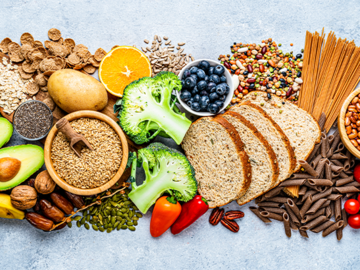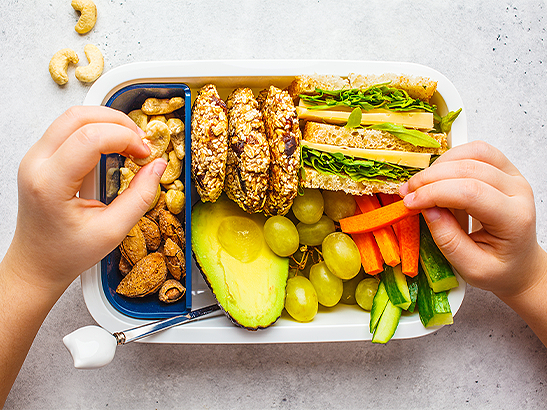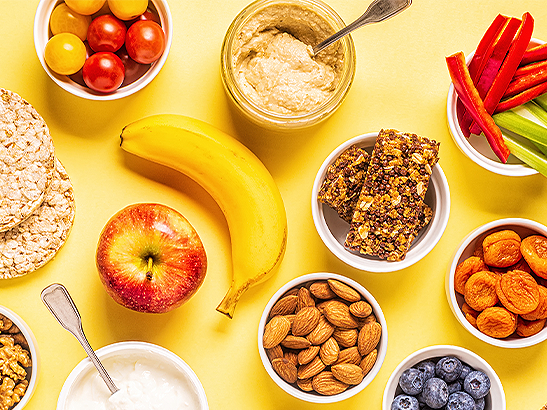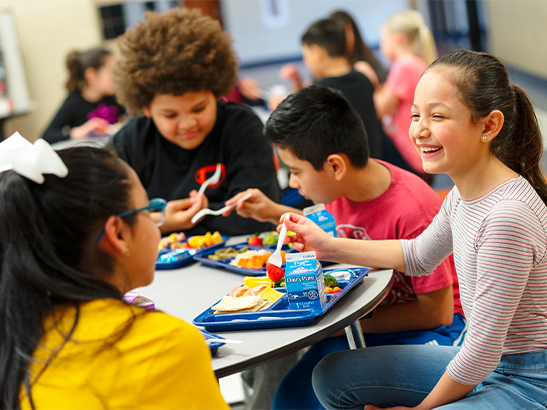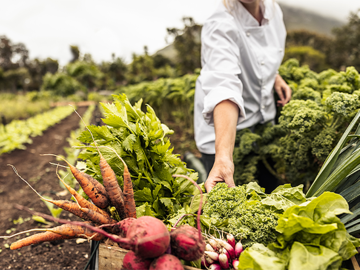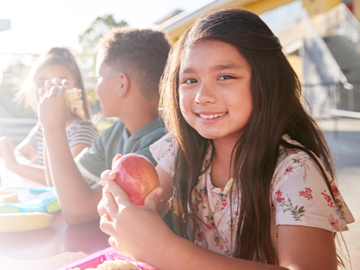by Elissa Knott, RD, LDN; Stacie Reiter, RDN; Kylie Smith, RD, LMNT
Food insecurity and academic achievement are directly connected. When students are facing food insecurity how can they be expected to achieve their full potential? How can we provide equity so those facing more difficult circumstances are positioned and supported for success?
Sodexo registered dietitians take on the widely unspoken pandemic facing American students.
Food Insecurity: Why School Meals?
1 in 6 kids in America are at risk of hunger. School meals provide the nutrition students need throughout the day for academic achievement. When a registered dietitian is involved in meal planning, meals are tailored to not only meet nutritional needs but to impact mental, physical, and emotional wellbeing. Over the years school meals have had a stigma surrounding them that RDs in school nutrition hope to break. With guidance from an RD, meals can be a nutrition education opportunity helping to expose students to healthy options, encouragement to build healthy habits, and can teach students to visualize wholesome meals with a variety of food options.
What impact can school meals have?
School meals are meant to be two-thirds of a student's daily calorie needs. The SBP (School Breakfast Program) and NSLP (National School Lunch Program) provide 25% and 33% respectively of the total daily calorie needs for students. With the direction of a Sodexo registered dietitian, menus are planned to be at least 80% whole grain rich, with an emphasis on increasing fruit and vegetable intake.1 Additionally, school meals are created with limited sodium and saturated fat which contributes to cardiovascular health. School meals also improve health and performance outcomes such as reduced obesity, fewer nurse visits, improved achievement, reduced absenteeism.1
How can we improve access?
The art of targeted menu planning has become crucial to our newest generations. Students are asking for more variety and customization within their meals. Menu items tailored based on age and demographic information helps to excite students to want to eat, which can raise participation. Menu items are crafted to be culturally, religiously and trend-relevant based on local demographics to add interest and comfort to the meal program. In addition to items students see at home, Sodexo RDs add global flare to recipes to provide opportunities to try new or unfamiliar items, making mealtime an opportunity to be adventurous.
Adding more types of meals served besides breakfast and lunch has dramatically improved the meals available to communities. Many schools see success in snack or even dinner programs to after school or extended day activities.
Backpack programs are another opportunity to reduce hunger during times classes are not in session. Sodexo volunteers assemble bags to send students home with meals from food banks and pantries to support food access during the weekend or other non-school days.
How has COVID-19 impacted student nutrition?
During the COVID-19 pandemic, all schools across the country had the opportunity to receive free meals. This was in an effort to assure access and combat food insecurity and hunger by meeting families where they are. This was all possible due to the quick action from units and frontline staff when schools closed. The teams ensured free meals were provided to students who would have missed opportunities to eat throughout the day.
Sodexo teams provided Breakfast, Lunch, Dinner, Snack, and Multi-day meal pack outs with home heating instructions. In addition to access to meals at schools, meal delivery on school bus routes and pop-up sites closer to higher populated communities helped to provide food security to students and families. Between March 2020 and January 2022, Sodexo’s K-12 schools served over 456 million meals to students.
The improved access to meals through various efforts between school administration, Sodexo, and parent volunteers have helped reduce financial strain and uncertainty caused by the effects of the pandemic. The situation has also inspired innovation, with dining teams providing improved access to meals with a variety of serving models to reach students and families. And free meals offered across the country allowed students access to meals without concerns of meeting income eligibility requirements and eased the transition to expanded meal service options.2
How can I help?
The Sodexo Stop Hunger Foundation mobilizes experts, innovators, volunteers and donors to feed children in the United States today, and to advocate for policies that ensure no child is hungry again tomorrow. Founded in 1999, Sodexo Stop Hunger Foundation has since granted close to $34.5 million to help families, individuals and children at-risk of hunger in the United States. Sodexo firmly believes that today’s young people are the generation to end hunger and have invested in innovative approaches to engage youth in the issue.
The Sodexo Stop Hunger Foundation is a proud partner of No Kid Hungry. Find out how you can get involved today.
- Updated Nutrition Standards Have Significantly Improved the Nutritional Quality of School Lunches and Breakfasts - Elizabeth C. Gearan, MS, RD & Mary Kay Fox, MEd
- No Kid Hungry - The Importance of School Meals

